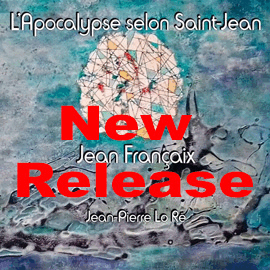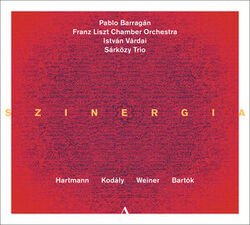Dieses Album versetzt uns gleich in ein ungarisches Ambiente mit einer Bearbeitung von Zoltan Kodalys Kálló-Doppeltanz für Klarinette, und Kammerorchester. Darauf folgt Karl Amadeus Hartmanns Kammerkonzert für Klarinette, Streichquartett und Streichorchester, eine Hommage des Komponisten an Zoltan Kodaly. Es hat acht Sätze, eine Introduktion, das Tanzthema und die folgenden Tanz-Variationen. Das Werk ist in einer sehr stimmungsvollen Interpretation zu hören, die auch nostalgische und düstere Passagen wirkungsvoll betont. Mithin gelingt Barragan und dem Liszt-Kammerorchester eine ungemein starke und expressive Interpretation.
Leo Weiners Divertimento Nr. 1 (Alte ungarische Tänze), Bartoks Rumänische Volkstänze und Kodalys Epigramme betonen in den Arrangements von Lajos Sárközy, István Várdai und Jonas Dominique die Verbundenheit mit der Volksmusik. Klarinette und Cimbalon bringen tolle Farben in die Musik. Auffallend ist wie sehr sich Barragan bemüht, Teil des Orchesters zu sein.
Mit Paco de Lucías Callejón del Muro bringt Pablo Barragan dann noch ein Stück Sieger andalusischen Heimat ins Programm, das durchaus passt und seine stupende Musikalität unterstreicht.
Dieses Album kann man daher uneingeschränkt empfehlen für alle, die bekannte Stücke in neuem Outfit auf höchstem musikalischem Niveau erleben wollen.
This album immediately immerses us to a Hungarian atmosphere with an arrangement of Zoltan Kodaly’s Kálló Double Dance for clarinet and chamber orchestra. This is followed by Karl Amadeus Hartmann’s Chamber Concerto for Clarinet, String Quartet and String Orchestra, the composer’s tribute to Zoltan Kodaly. It has eight movements, an introduction, the dance theme, and the dance variations that follow. The work is heard in a very atmospheric interpretation that also effectively emphasizes nostalgic and somber passages. As a result, Barragan and the Liszt Chamber Orchestra create an incredibly strong and expressive interpretation.
Leo Weiner’s Divertimento No. 1 (Old Hungarian Dances), Bartók’s Romanian Folk Dances and Kodaly’s Epigrams emphasize the connection to folk music in the arrangements by Lajos Sárközy, István Várdai and Jonas Dominique. Clarinet and cimbalon add great color to the music. It is striking how much Barragan tries to be part of the orchestra.
With Paco de Lucía’s Callejón del Muro, Pablo Barragan adds a piece from his native Andalusia to the program, which fits perfectly and underlines his stupendous musicality.
This album can therefore be recommended without reservation to all those who want to experience well-known pieces in a new outfit at the highest musical level.




















